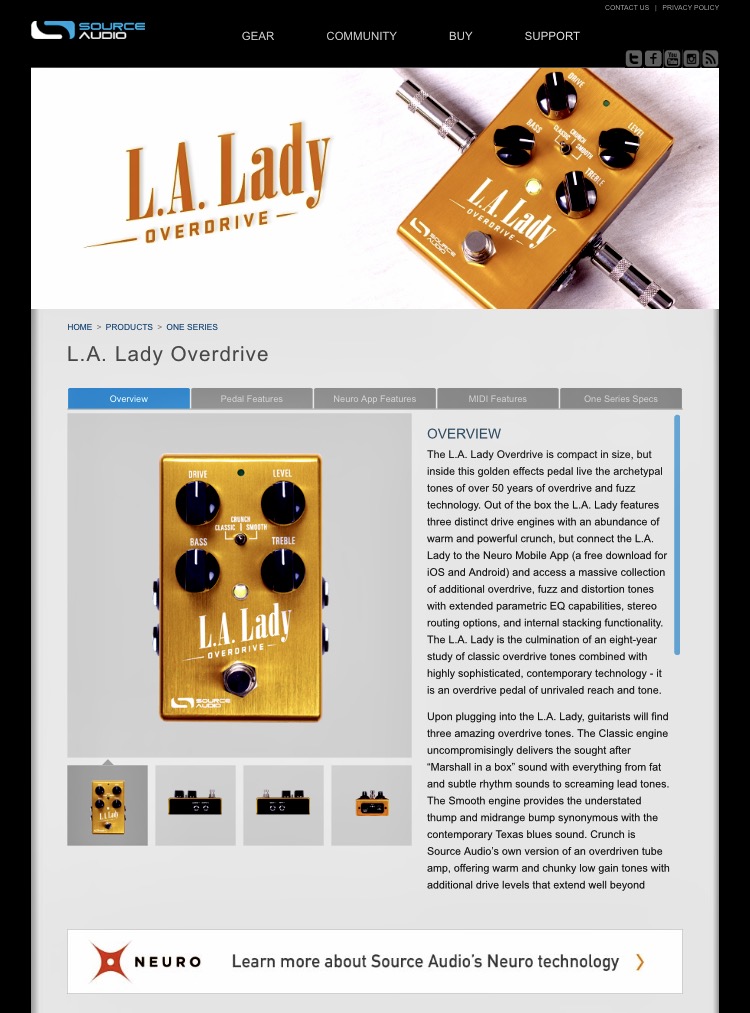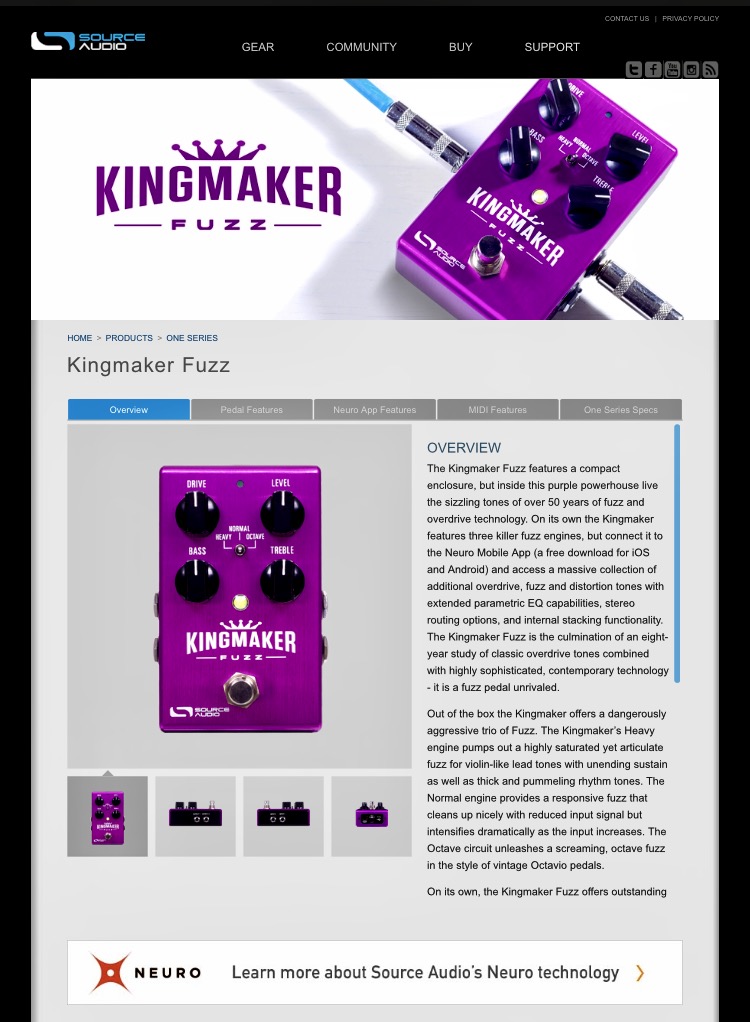Hello Gearheads! Today's post is fueled by the fine folks at Source Audio and their recent 'Tour Box', a traveling set of pedals that I had the chance to check out and share with you!
Included are the L.A. Lady Overdrive, Kingmaker Fuzz and the mighty Nemesis Delay.
Without any further ado, let's dive right in.... I tested these pedals on my studio pedalboard, which is always in flux and to be quite honest, in need of a major re-haul... clean up on aisle 4 anyone? All the pedals sounded great and integrated quite nicely on the board. I do run a specific interface (PI-01) from LA Sound Design (who has done all of my boards) that has a very good sounding buffer system, and I didn't experience any issues in tonal coloration or changes at all with the Source Audio pedals in line. You might ask, why is that a big deal? Because a lot of pedals when inserted into an existing system (largely due to their own propriety buffer bypasses) really can alter the existing tone and the tone of other pedals after them.
Important to note, all three Source Audio pedals contain a magnificent amount of secondary control via a iOs or Andriod APP. You can alter the pedal in many ways not limited to deeper settings, new drive, or delay engines ultimately creating your own personal effect pedal. Tweakers and deep sea tone divers rejoice!
The L.A. Lady is a formidable overdrive and boost pedal. It immediately hearkens back the favored pushed tube amplifier tone that we all love, all the way to hot-roded Marshall-Esq distortion. The EQ section on the pedal only includes a two band treble and bass, which makes it so easy and useful - IMPORTANT! While I love to get into the minutia of EQ'ing a pedal, it's nice to just have simple tools to get the tone you're after.
I preferred the 'Classic' mode on the L.A. Lady which offered the richest tone to my ears in my rig. I'm running a clean 'pedal platform' rig with a 120 watt Blankenship Twinplex and a 2x12 Kerry Wright diagonal Marshall style cabinet loaded with UK made Celestion Vintage 30's. I could see however, that if you were using a lower wattage amp for example or a Marshall set to stun, you might be drawn to the other less wide tonal choices.
Check out the demo below of the L.A. Lady with the Nemesis Delay mixed in to taste...
The Kingmaker Fuzz boasts 3 different Fuzz tones - a Big Muff, Fuzz Face and Octavio engines. They are all quite musical and could work well with a variety of genres. Ask any guitar player and they will most likely agree that fuzz pedals are a mysterious (often difficult, yet rewarding) experience. They are very suspect to tonal changes based on temperature, grounding, and noise, and can even transmit radio waves.... AM radio anyone? The Kingmaker being digital doesn't have any of those issues and is quite easy to dial in and most importantly sounds great. I enjoyed checking out the 3 different engines and thought the Fuzz Face setting or 'Normal' setting was warm and could cut in a band mix very well. My favorite however was the Octave engine, simulating the Tycobrahe Octavio. Rich, and full of the crazy on-the-verge-of-blowing-up tone that can create some very cool soundscapes as well as conjure up your best James Marshall Hendrix impression.
Check out the demo below of the Octave engine with the Nemesis Delay mixed in for taste...
Lastly the beastly Nemesis Delay was a joy to play. In similar fashion to many digital delays on the market currently, there are a bevy of available engines and options including: presets, vintage to modern delay tones, tap temp, and flexible controls. That last bit was my favorite aspect to the Nemesis Delay... the ability to easily get a sound you like with minimal control and knob twisting! While the Neuro Mobile APP allows you to get into much detail and damn near infinite control, I'm happy to say the controls on the box itself are easy to dial in, useful and toneful. Another nice thing I noticed about the controls are that when you cycle from each engine, the controls (including delay time, feedback, rate, etc) stay the same as your last adventure. It's helpful when trying to dial in a sound that you're maybe unsure of, without having to start over each time you switch --- this is NOT standard on many other delays, and something I found extremely useful. It is handy to have everything at your fingertips, but (especially when in the studio environment) dialing up sounds quickly is incredibly important.
I tend to prefer natural delay tones: vintage tape and Deluxe Memory Man Bucket Brigade types are usually my favorite and what I gravitate towards. They sounded fantastic and WARM on the Nemesis. The dry signal of my guitar along with the effected delay tone was very pleasing and organic, no weird artifacts or loss of tone here. I can honestly see this pedal as a big solution for anyone seeking a powerful delay system without a huge footprint, and an interface that can be as in depth as you'd like it to be. That's the thing with Source Audio... as a company they seem to want to give the player as much or little control without sacrificing on either end of the spectrum. Very, very cool indeed. At this very moment, they're working on the finishing touches of their new Reverb pedal the Ventris Reverb which debuted at this past Winter NAMM, which ultimately has been created alongside Source Audio customers and players with their valuable input in mind. I look forward to reviewing the Ventris once it's finished.
Check out the demo below of the Nemesis Delay...



